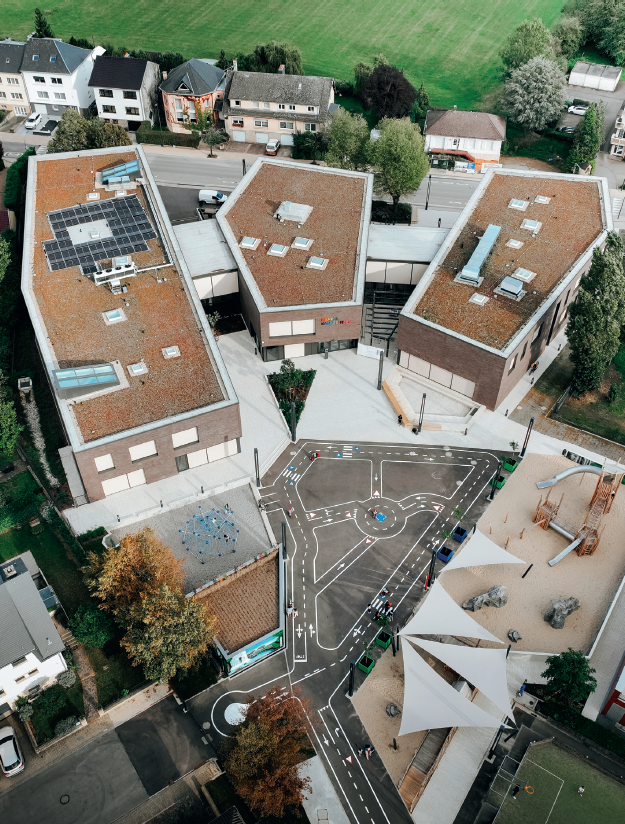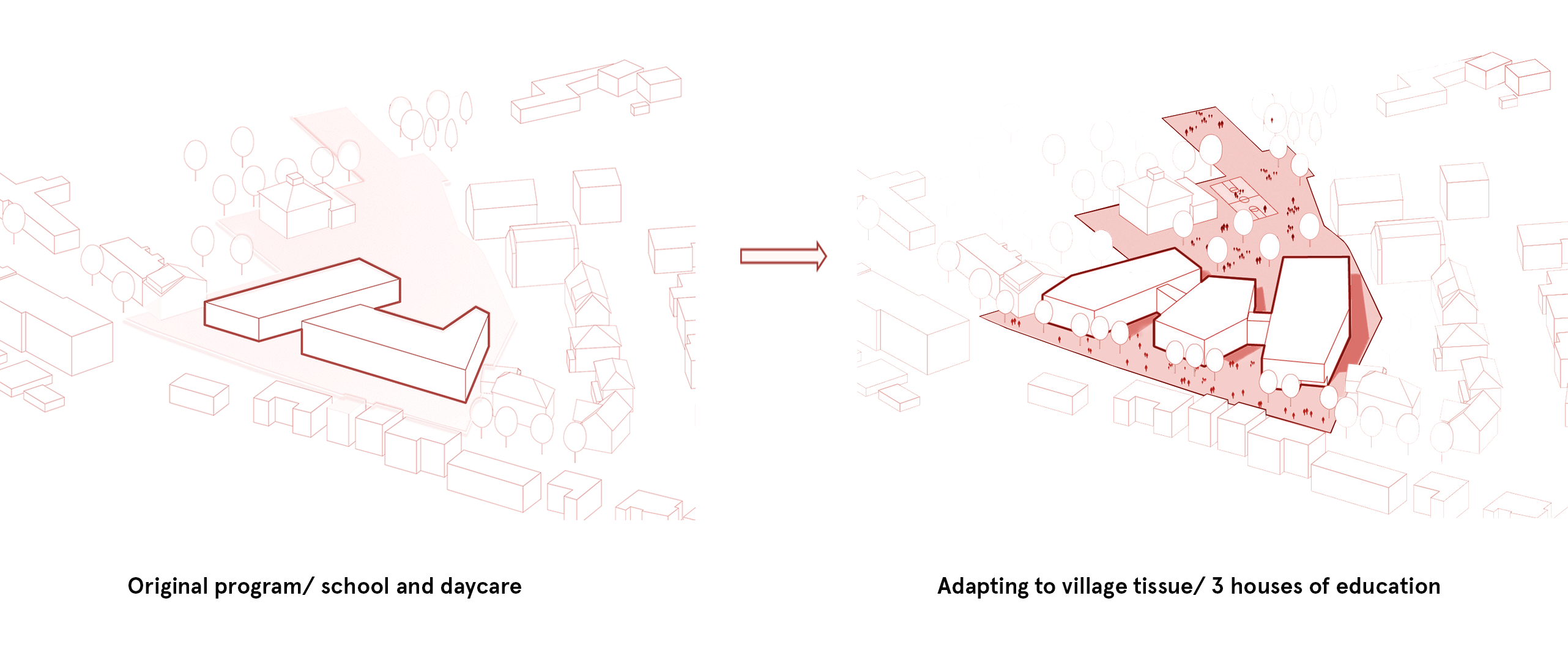The Campus Berchem consists of three blocks that form a triangular configuration, linked by a central axis of pathways allowing smooth transitions between the spaces. These connections allow synergy within, creating a visual and physical sense of unity across the campus.
Campus Berchem
Connecting Berchem : A Hub for Learning and Community - Luxembourg City, Luxembourg
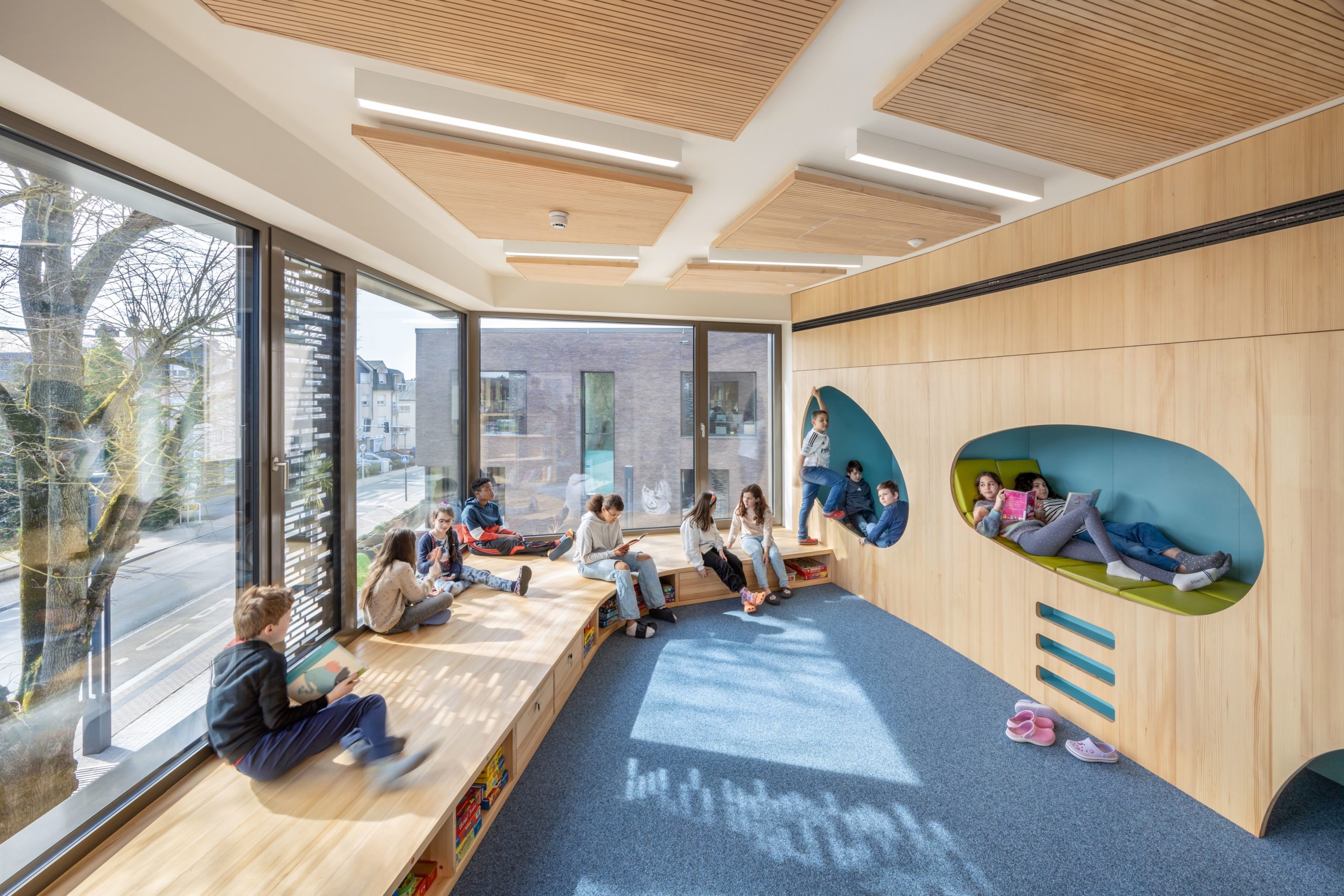
In the school’s interior, we are integrating timber elements to enhance sustainability and create a healthier learning environment. By using timber, we reduce carbon footprint while benefiting from the wood’s natural warmth and insulating properties.
A school with swings, an indoor slide, and indoor play caves where children once again want to go to school… I wish I could be a child again.
Each block is adapted to specific educational functions, with the open spaces in the center acting as shared zones. The campus does not dictate how children should learn or interact—it invites them to explore. Playful elements such as slides, visible kitchens, and interconnected indoor and outdoor spaces are made as functional tools that encourage curiosity and provide moments of unexpected joy. Children can climb, rest, play, and learn, often all in the same area.
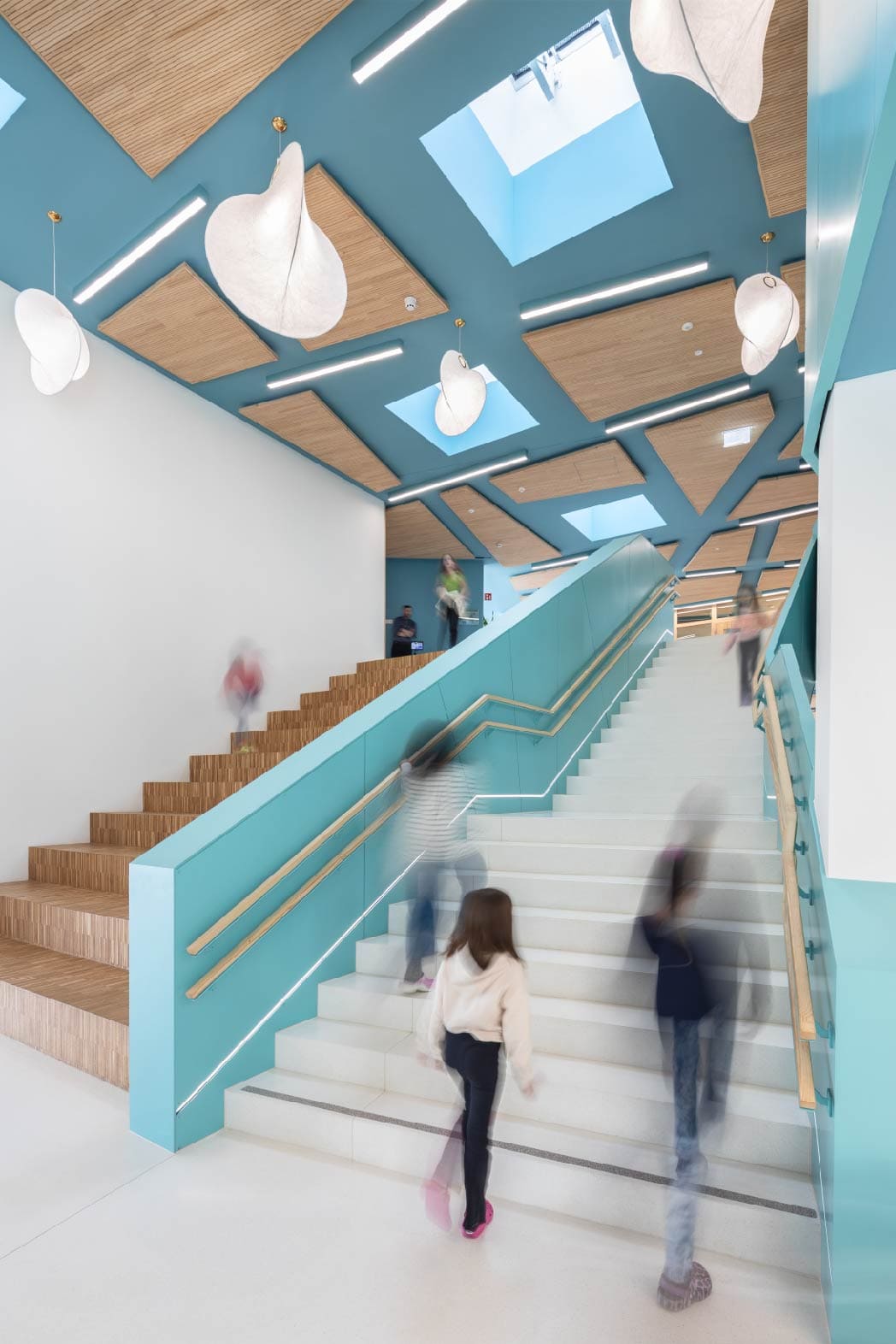
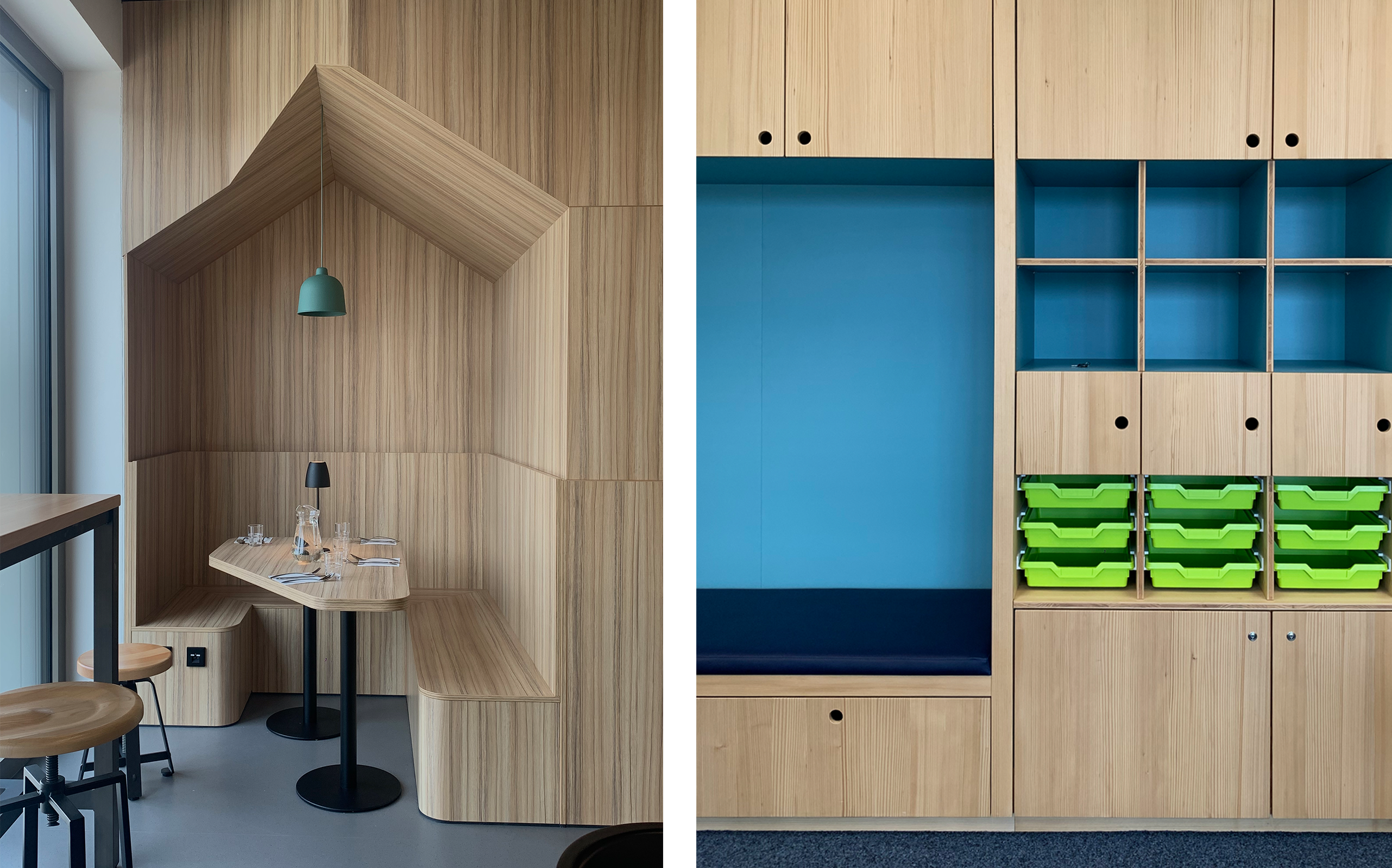
The Campus avoids the creation of a single, massive structure by separating the buildings into three distinct blocks, forming an arrangement reminiscent of a village. This layout creates a sense of scale and accessibility, with interconnected pathways and shared spaces.
Sited amidst a residential area and green spaces, the campus is designed to blend into the existing fabric of the village. Soft landscaping, tree-lined pathways, and outdoor seating areas further integrate the site into its neighborhood.
Trees and landscaping integrated into the site contribute to cooling and humidity control, reducing heat buildup. The combination of shaded zones, vegetation, and building materials establishes a stable microclimate for the campus environment.
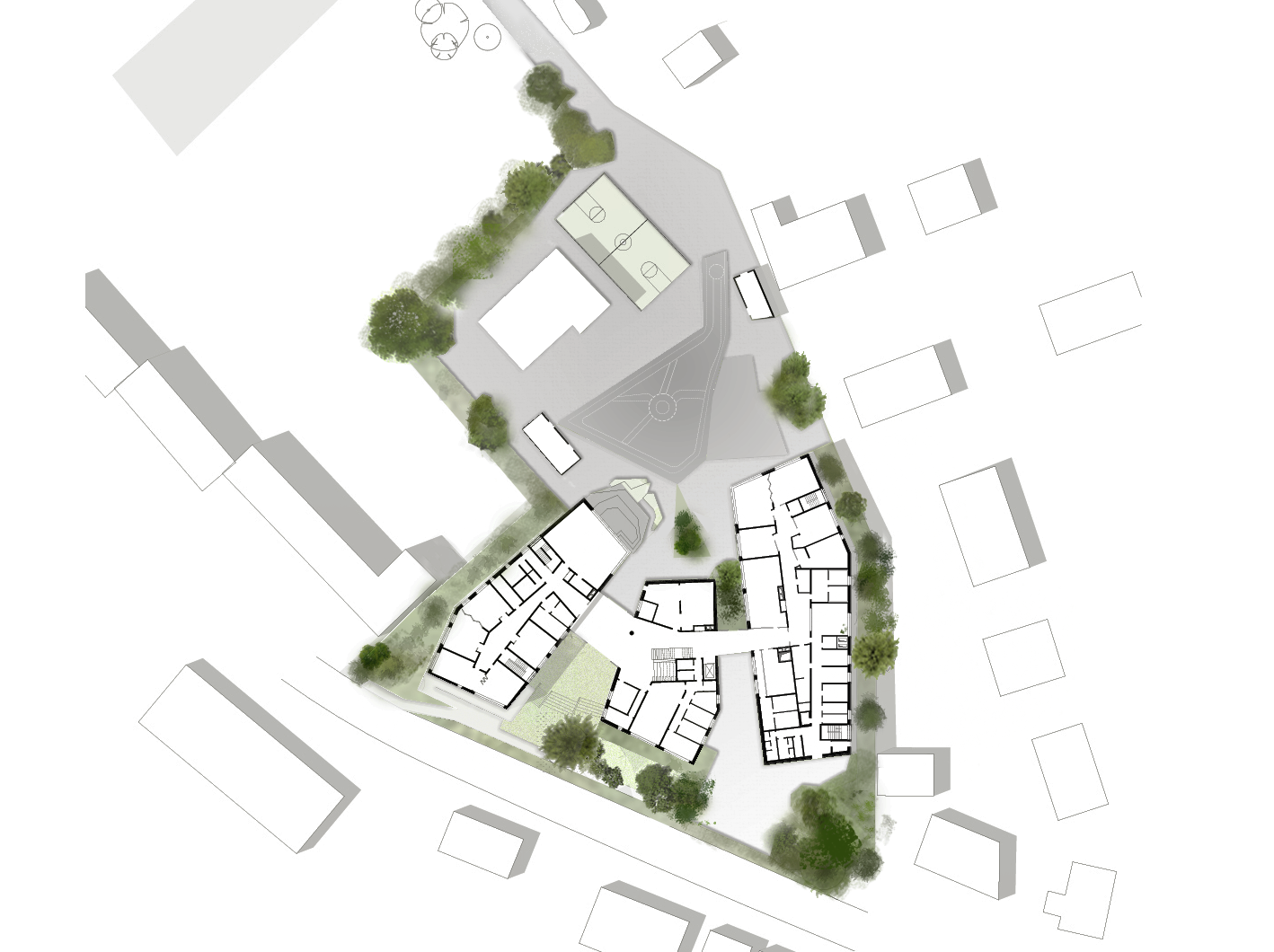
The architectural design includes Luxembourg’s heritage through the use of locally inspired brickwork. The brick facades are designed to harmonize with the village fabric and regulate sunlight by absorbing and distributing heat.

The facades, combined with the building orientation, control sunlight and wind exposure regulating the overall temperature.
